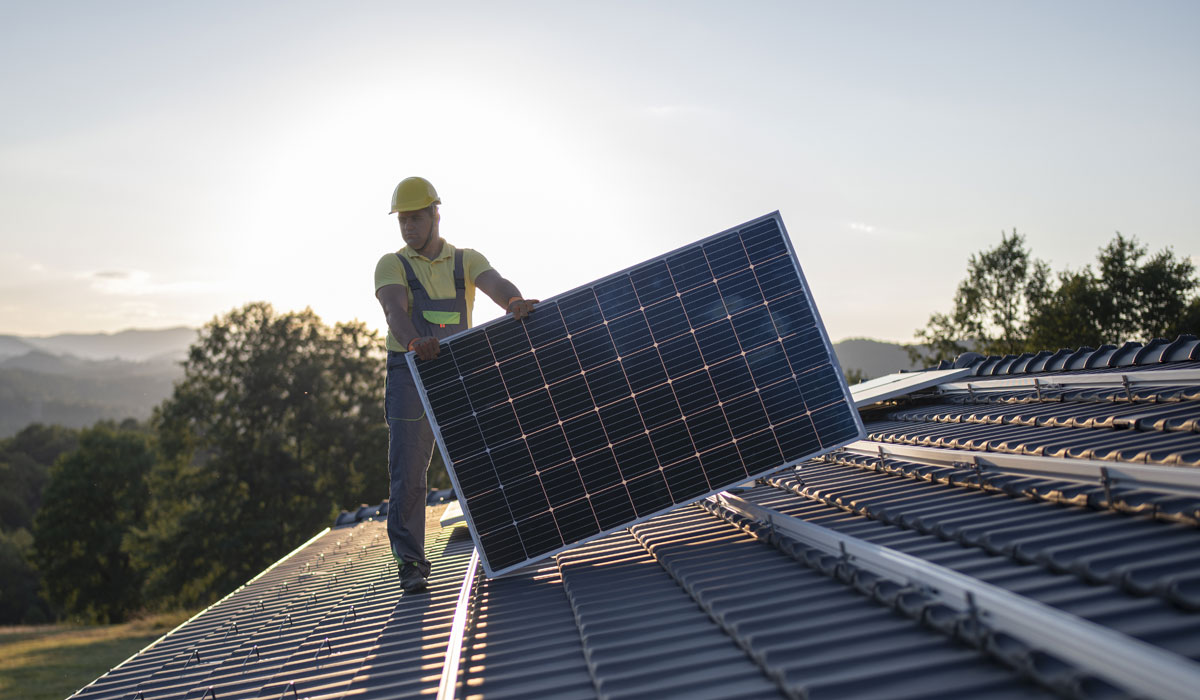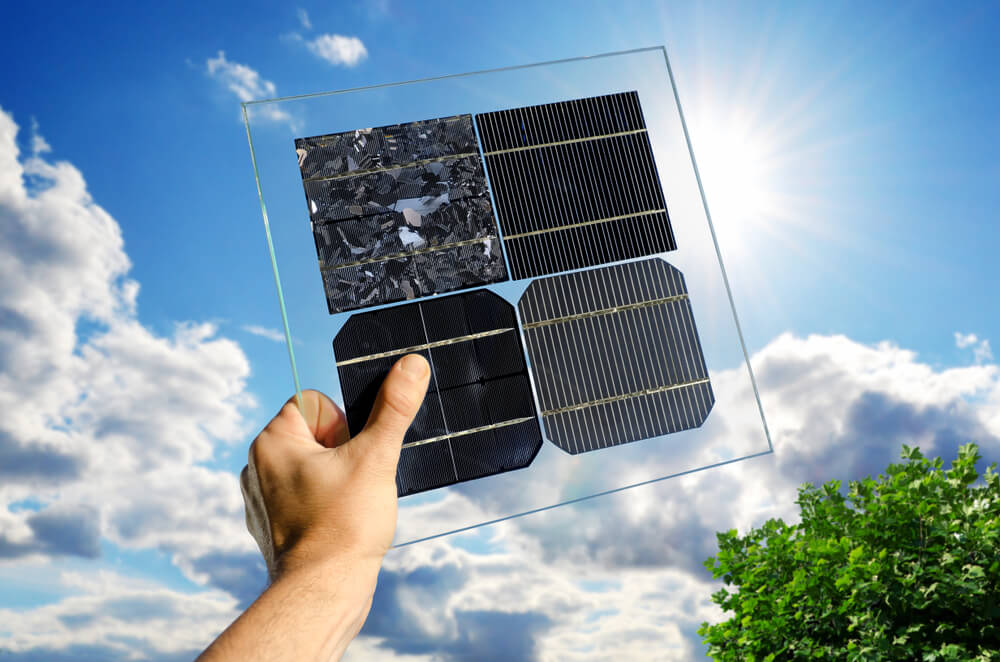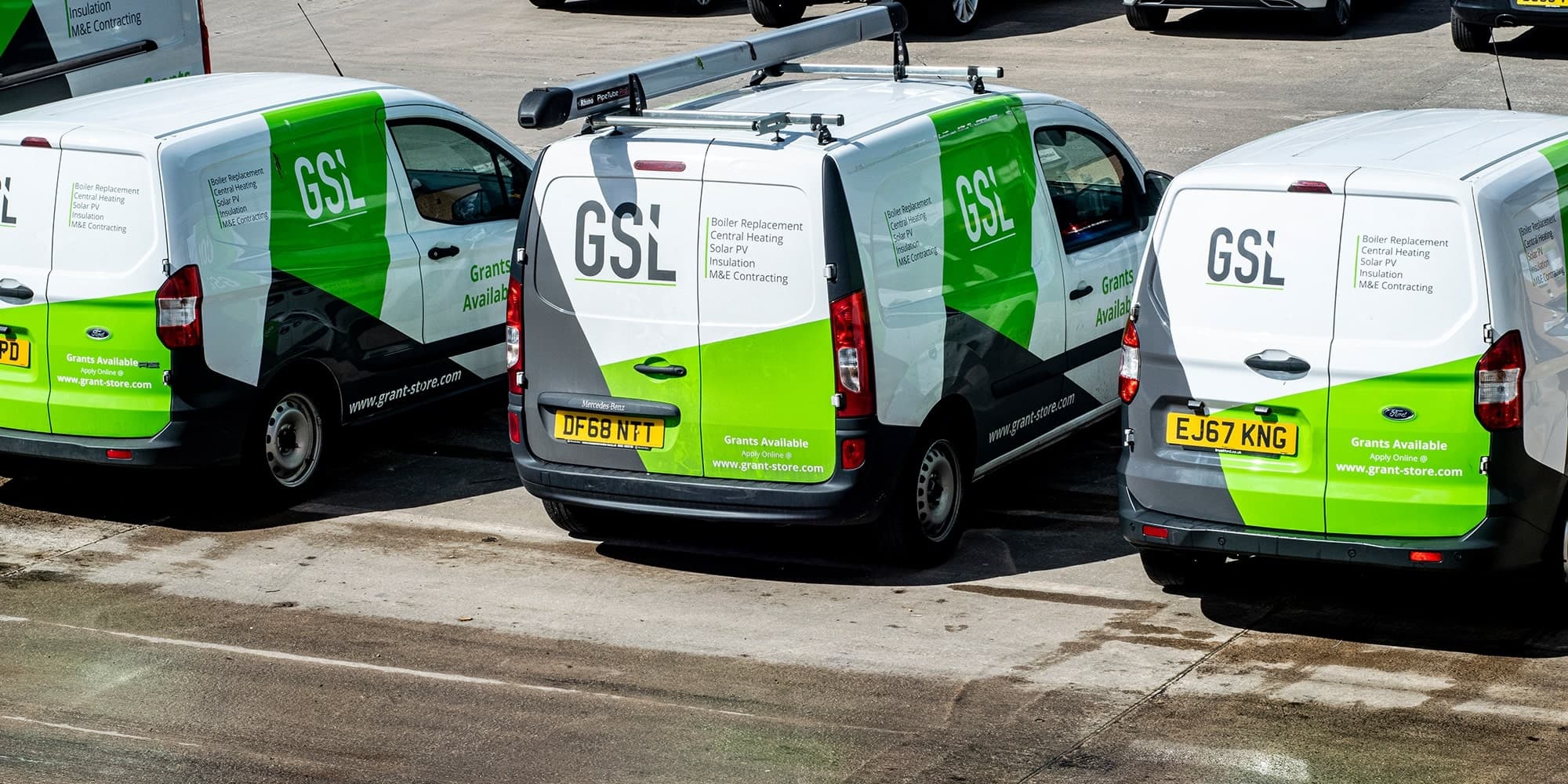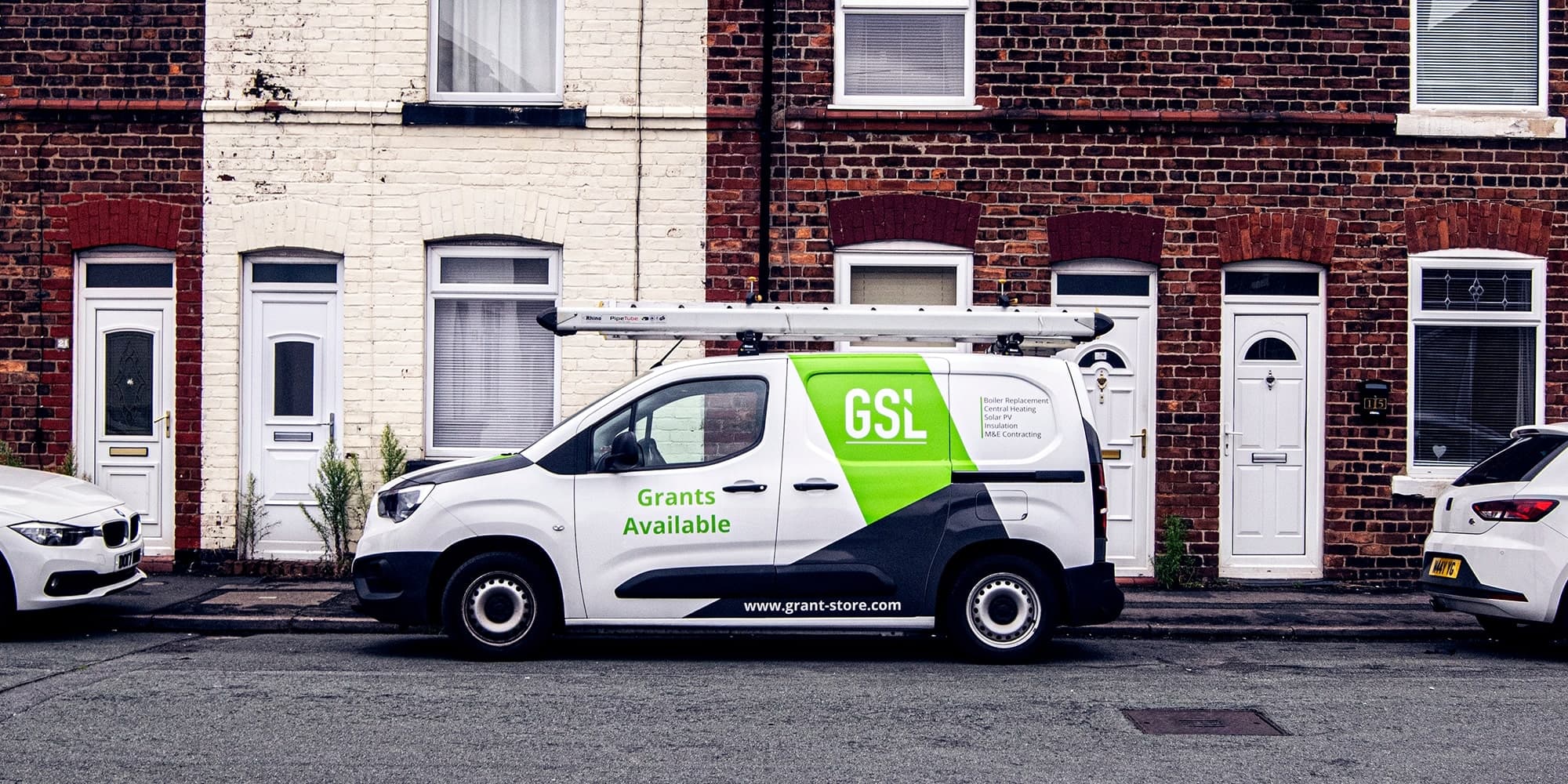June 9th, 2025
Solar water heating vs solar PV: What’s right for you?
Written by: Gareth Whitehill
News
If you’re wondering how much solar panels cost in 2024, you’re in the right place. Understanding solar panel costs upfront is a great way to know if investing in solar is for you.
Let’s break down what goes into the price of solar panels so you can get a better idea of how much a system might cost you.
Key Takeaways
There are a few different things that impact the cost of a solar panel installation; let’s take a look.
The overall cost of your solar installation will consider the price of the various hardware and equipment used. These include:
Optional solar equipment can include:
You also need to pay for the labour involved in securing the solar panels. Keep this in mind when considering the overall solar costs, as skilled labour will make sure your solar panels are fitted safely and efficiently.
This is a lesser-known cost related to solar panel installation, but it is necessary to connect your system to the power grid legally and safely. Interconnection fees cover the admin costs of linking your solar panel system to the utility grid.
Levied by your local District Network Operator (DNO), these fees vary depending on system size and where you connect. Connecting to a more congested part of the grid might involve higher fees than areas with spare capacity.
Solar panels come with plenty of long-term savings. Check out our handy solar panel calculator here to see how much you could save with solar power!
Get a quote for your solar installationThe costs related to your solar installation aren’t the only costs you need to consider. Your final quote will depend largely on the size of the installation, as this determines how many solar panels are needed.
Let’s take a closer look.
A larger system size is great if you want to maximise the amount of solar power your panels can turn into energy, but more panels also equate to a higher price tag.
On the other hand, you could choose to use fewer, more efficient monocrystalline panels, but these tend to be more expensive than less efficient polycrystalline panels.
Solar panels can be heavy. If your roof isn’t in top condition (e.g., damaged tiles, leaking, etc.), it might not be able to handle the weight of a solar installation, resulting in potential impairment or even collapse. In this case, you may need to spend extra on repairs beforehand.
Solar panels are a very low-demand technology, but that doesn’t mean you can set them and forget them.
Occasional cleaning to remove dust and debris will help keep your panels working as efficiently as possible. If your panels are particularly hard to reach, you might need to hire a professional cleaner with the correct safety equipment to do this for you.
You might also need to invest in new parts (e.g., inverters and damaged panels) in the rare case they need replacing or repairing over their lifetime.
While optional, additional equipment can help you make the most out of your solar panels. A monitoring system can help you track how much electricity is generated and whether your energy needs are being met while also highlighting any issues or inefficiencies.
On top of this, battery storage has two major benefits.
They store excess solar power generated during the day for use at night or during cloudier periods.
Battery-stored solar energy can also generate extra income by being sold back to the grid via Feed-In Tariffs.
Knowing how much solar panels cost can be tricky because there are so many variables to consider.
If these costs appear too high at first, we have good news. The government offers a number of grants and funding options to help people like you with home heating upgrades, including solar panels!
For example, the ECO4 grant scheme provides home efficiency upgrades to eligible households nationwide, either for free or at a heavily subsidised rate.
This includes reduced home insulation, heating upgrades, and solar panel installation.
But what if you don’t know where to start with your ECO4 claim? That’s where Grant Store comes in.
Not only can we guide you through the ECO4 application process to see if you can get solar panels at a reduced rate, but our expert team of solar installers will also secure your panels for you. It couldn’t be easier!
If you think solar panels are the way forward for your home or business, Grant Store is here to make access to solar power easier.
Just get in touch with a member of our team to learn more about how you can live comfortably and sustainably with solar power today!
When choosing solar panels, several factors need to be considered to ensure maximum efficiency and return on investment. The type of panel, energy production potential, and evaluation of electricity prices are all crucial considerations.

When considering the installation of solar panels, one important factor to take into account is the amount of roof space needed. The size of the panels and the desired capacity of the system will determine the required roof area.
It’s important to note that the amount of usable roof space can vary from house to house. Factors such as obstructions like chimneys or roof windows, as well as the shape and orientation of the roof, can impact the available space for solar panels. Therefore, homeowners should consider their specific roof dimensions and any potential limitations when planning for solar panel installation.

When it comes to solar panels, there are two main types to choose from: monocrystalline and polycrystalline. Each type has its own unique characteristics, including cost and efficiency.
Monocrystalline solar panels are known for their high efficiency. They are made from a single crystal structure, which allows them to generate more electricity compared to polycrystalline panels. However, this higher efficiency comes at a higher cost. On average, monocrystalline panels are more expensive than polycrystalline panels.
On the other hand, polycrystalline solar panels are more affordable but have slightly lower efficiency. They are made from multiple crystal structures, which can lead to a decrease in overall performance. However, their lower cost makes them a popular choice for homeowners looking for a more budget-friendly option.
There is also a third type of solar panel called thin-film panels. These panels have a higher surface area requirement but are generally less expensive. However, their efficiency is lower compared to monocrystalline and polycrystalline panels.
Find out how solar panels work here.
Surplus energy storage with batteries plays a big role in a solar panel system, providing numerous benefits for homeowners. When solar panels generate more energy than is needed at a particular moment, batteries allow for the storage of this unused electricity for future use. Additionally, homeowners can choose to sell this excess electricity back to the grid, further optimising their energy generation.
The importance of solar batteries lies in their ability to increase self-sufficiency. By storing excess electricity, homeowners can rely on their own generated power during times when sun exposure is limited or demand is high. This reduces reliance on the National Grid and helps homeowners maintain a consistent power supply.
Moreover, using batteries in a solar panel system allows homeowners to take full advantage of their energy generation. By storing excess energy, it can be used during peak demand periods, reducing the need for purchasing electricity from the grid at higher prices. This can result in significant energy cost savings over time.
Read our latest guide: How do you store solar energy?
Investing in a solar panel system isn’t just a step towards a more sustainable lifestyle; it’s also a smart financial decision in the long run as the potential savings will benefit you for years to come. That being said, we understand it’s a big decision. That’s why we’re committed to standing by you every step of the way.
Our expertise in the industry, paired with a dedication to top-notch service, makes us the go-to company for all your solar energy needs. We take pride in tailoring solutions that are not only cost-effective but also environmentally conscious, ensuring that your transition to solar is smooth sailing.
June 9th, 2025
Solar water heating vs solar PV: What’s right for you?
Written by: Gareth Whitehill
News
May 9th, 2025
Solar panel installation: Step-by-step guide for UK homes & businesses
Written by: Gareth Whitehill
News
April 9th, 2025
Are solar batteries worth it in the UK?
Written by: Gareth Whitehill
News
April 9th, 2025
What size solar battery do I need?
Written by: Gareth Whitehill
News
January 20th, 2025
Heat pumps vs. traditional heating: Which is right for your home?
Written by: Gareth Whitehill
Heat Pumps
January 13th, 2025
Do heat pumps work well in older homes?
Written by: Gareth Whitehill
Heat Pumps
January 6th, 2025
How do air source heat pumps work?
Written by: Gareth Whitehill
Heat Pumps
December 30th, 2024
Are air source heat pumps worth it in the UK climate?
Written by: Gareth Whitehill
News
December 23rd, 2024
Why are heat pumps taking over UK homes?
Written by: Gareth Whitehill
Heat Pumps
December 16th, 2024
Are heat pumps suitable for smaller homes?
Written by: Gareth Whitehill
Heat Pumps
September 25th, 2024
Grant Store are official sponsors of Chorley FC!
Written by: Gareth Whitehill
News
August 30th, 2024
Grant Store is an official Octopus Trusted Partner!
Written by: Gareth Whitehill
News
August 1st, 2024
How green is solar energy?
Written by: Gareth Whitehill
Solar
July 30th, 2024
How to insulate an old house
Written by: Gareth Whitehill
News
July 29th, 2024
What’s Involved in an Air Source Heat Pump Installation?
Written by: Gareth Whitehill
Heat Pumps
July 28th, 2024
A complete guide to heating water with solar power
Written by: Gareth Whitehill
Solar
July 25th, 2024
How To Make the Most Out of ECO4 Funding
Written by: Gareth Whitehill
News
July 23rd, 2024
Are UK homes getting any greener?
Written by: Gareth Whitehill
News
June 27th, 2024
Why should you choose an MCS installer for your heat pump project?
Written by: Gareth Whitehill
Heat Pumps
June 27th, 2024
When does ECO4 end, and what happens next?
Written by: Gareth Whitehill
News
June 11th, 2024
Exploring Energy Grants for Pensioners: A Guide to Lowering Your Energy Costs
Written by: Gareth Whitehill
News
June 11th, 2024
Do air source heat pumps work well with solar panels?
Written by: Gareth Whitehill
Heat Pumps
June 11th, 2024
Your Guide to Understanding Energy Performance Certificates (EPCs)
Written by: Gareth Whitehill
News
June 11th, 2024
What energy grants can I get on Universal Credit?
Written by: Gareth Whitehill
News
June 1st, 2024
Who qualifies for a boiler grant in the UK?
Written by: Gareth Whitehill
News
May 22nd, 2024
Is the UK Government Planning to Ban Gas Energy?
Written by: Gareth Whitehill
News
April 25th, 2024
Your Complete Guide To Off-Gas Property Grants in the UK
Written by: Gareth Whitehill
News
April 24th, 2024
What are electric storage heaters?
Written by: Gareth Whitehill
News
April 23rd, 2024
How To Improve Your Home’s EPC Rating: A Guide to Boosting Efficiency and Reducing Costs
Written by: Gareth Whitehill
News
April 23rd, 2024
What is the ECO Scheme, and how can it help me?
Written by: Gareth Whitehill
News
April 23rd, 2024
How to apply for the ECO4 Grant: Everything you need to know
Written by: Gareth Whitehill
News
April 18th, 2024
The Complete Guide to Heat Pumps: Benefits, Costs, Savings, and Efficiency
Written by: Gareth Whitehill
Heat Pumps
March 13th, 2024
What size solar PV system do I need?
Written by: Gareth Whitehill
Solar
February 27th, 2024
What grants are available for energy-saving?
Written by: Gareth Whitehill
News
November 24th, 2023
How Many Solar Panels Do I Need?
Written by: Gareth Whitehill
Solar
November 23rd, 2023
How Much Money Do Solar Panels Save?
Written by: Gareth Whitehill
Solar
November 22nd, 2023
How Are Solar Panels Made?
Written by: Gareth Whitehill
News
November 22nd, 2023
Do you need planning permission for solar panels?
Written by: Gareth Whitehill
News
November 22nd, 2023
How Much Do Solar Panels Cost?
Written by: Gareth Whitehill
News
November 22nd, 2023
How Do Solar Panels Work?
Written by: Gareth Whitehill
News
November 20th, 2023
Smart Export Guarantee Rates 2024
Written by: Gareth Whitehill
News
November 20th, 2023
Can I Add a Battery to my Solar System?
Written by: Gareth Whitehill
News
November 20th, 2023
How Do You Store Solar Energy?
Written by: Gareth Whitehill
News
October 3rd, 2023
Solar panels: are they worth the cost?
Written by: Gareth Whitehill
News
September 19th, 2023
How efficient are solar panels?
Written by: Gareth Whitehill
News
September 19th, 2023
Do solar panels boost home value?
Written by: Gareth Whitehill
News
September 19th, 2023
What are the pros and cons of solar panels?
Written by: Gareth Whitehill
News
Not sure which energy-saving solution is right for your home? Or do you have questions about grant eligibility? Our team has the answers. Give us a call and we'll help you figure everything out.
Call us now on:
01942 918 844
"*" indicates required fields
